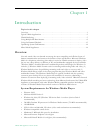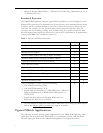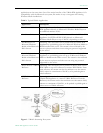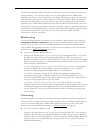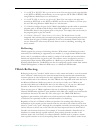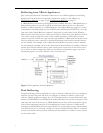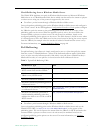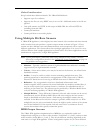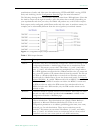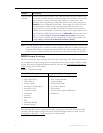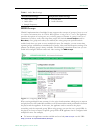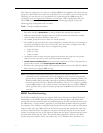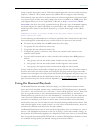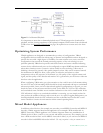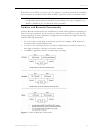
8 © 2008 VBrick Systems, Inc.
Other Considerations
Keep in mind these additional details. The VBrick Pull Reflector:
• Supports up to five redirects.
• Supports the first (or only) HREF entry in an .asx file. Additional entries in the file are
ignored.
• Only pulls streams via HTTP. It will accept an MMS URL but will use HTTP for
streaming from that URL.
• Cannot pull multicast.
• Cannot pull from a server-side playlist.
Using Multiple Bit Rate Streams
A VBrick WM Appliance (v4.0 or higher) has three internal video encoders and three internal
audio encoders that each produce a separate output stream as shown in Figure 3. These
streams can have different rates and characterizations and consequently can be used for
different applications. This feature allows these multiple applications to be served in a cost-
efficient manner. Some sample applications are listed below. All of these applications can be
simultaneously supported by a single WM Appliance.
• Multicast – Typically a multicast stream is high bandwidth since multicast is normally
supported only on high-bandwidth networks.
• Unicast – Often unicast clients, who may be located on the Internet, are offered lower
bandwidth streams.
• Archive – It may be useful to archive content containing multiple data rates. This
archived stream can be transferred to an appropriate VOD system such as VBrick's
EtherneTV Portal Server for serving at different data rates to different clients.
• Reflection – For an organization that has a distributed infrastructure with
multicast-capable offices connected by lower bandwidth non-multicast enabled links, it
may be useful to push/pull a unicast stream to a reflector for redistribution and/or
archiving at the remote site. The reflector can be provided by a Windows Media Server
or by the reflecting capability of VBrick's WM appliance.
• Multiple Bit Rate – These differently formatted video and audio streams can be served
simultaneously and the Windows Media Player will select and play the best stream—
based on bandwidth and other factors—from among the multiple streams that are
available. In the Microsoft world, this concept is generally called multiple bit rate. With
multiple bit rate, the player automatically selects the highest quality version of the stream
that fits the limitations of the network, and end users receive a continuous flow of
content that matches their specific connection speeds.
MBR Output Streams
The VBrick WM Appliance implementation of MBR lets you optionally enable and
independently configure up to three video encoders (Video Rates 1, 2, and 3) and up to three
audio encoders (Audio Rates 1, 2, and 3). They all run different encoding algorithms at the
same time on a single WM appliance. Various configuration options let you select different
Note System performance, particularly when using multiple bit rate streams, is directly
affected by configuration selections. See Optimizing System Performance
on page 14
for guidelines and suggestions.




